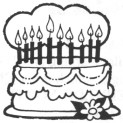Foreign Insulators
by Marilyn Albers
Reprinted from "Crown Jewels of the Wire", July 1989, page 5
HAPPY 10TH BIRTHDAY!
With this issue we mark the 10th Anniversary of this column, which has been
devoted exclusively to information on foreign glass and porcelain insulators and
related items. The very first article in this series appeared in the July, 1979
issue of CROWN JEWELS and was titled 'Meissen Porcelain." It told how I
acquired my first European porcelain insulator in Meissen, East Germany, and I
invited other foreign enthusiasts to pass along similar stories to share with
CROWN JEWELS readers.

The response has been most gratifying and I owe so much to
so many collectors who have provided information and loaned insulator specimens
for shadow profiles and CD/U number assignments. I am particularly indebted to
Jack H. Tod and N.R. Woodward for assigning these numbers and for their support
in co-authoring the books "GLASS INSULATORS FROM OUTSIDE NORTH
AMERICA" (Albers/Woodward) and "WORLDWIDE PORCELAIN INSULATORS" (Albers/Tod).
In addition, Jack made all the final inked drawings for both books and did a lot
of the printing and binding himself. It has been a privilege to work with these
two giants of insulatordom and I'd like to take this opportunity to thank them
both again for their loyal friendship, good counsel and invaluable assistance.
Here's to the next 10 years!
MARKINGS FROM EAST GERMANY IDENTIFIED!
While we don't have a great deal of information at this time, we have now
been able to identify some of the markings on porcelain insulators that have
been listed in WORLDWIDE PORCELAIN INSULATORS (WWPI) as "unattributed."
Our contact person at PORZELLANFABRIK FRAUENTHAL in Vienna, Austria, happens
to be in possession of the foreign insulator books, and has shown a lot of
interest in our hobby. He has supplied some of the answers himself and has been
good enough to suggest other contact for information. Hopefully, we can build on this and will eventually be able to fill in the
details concerning these manufacturers.
The four trademarks that are shown below are all attributed to porcelain
factories in East Germany. They belong to the Hermsdorf KOMBINAT of VEB'S. A
KOMBINAT is acombination of co-op of ceramic works and a VEB is an operation
owned by the people. I have an article from an East German trade journal that is
in the process of being translated from German into English. It gives quite a
bit of background information on Hermsdorf, which I will share with you at a
future time.
VEB KERAMISCHE WERKE HERMSDORF
(Hermsdorf Ceramic Works)
Hermsdorf, Thuringia,
East Germany
1890 - present

VEB KERAMISCHE WERKE NEUHAUS
(Neuhaus Ceramic Works)
Neuhaus-Schierschnitz,
Thuringia, East Germany
Dates unknown to me at this writing.

VEB PORZELLANWERK VEILSDORF
(Kloster Veilsdorf Porcelain Factory)
Kloster Veilsdorf, Thuringia,
East Germany
1760 - present; dates of insulator production unknown.

There is a similar marking on CD 428 found in Portugal, which is for CENTRO
VIDREIRO DO NORTE DU PORTUGAL, LDA. This has no connection with the Veilsdorf
Factory in East Germany as shown above.

VEB PORZELLANWERK AUMA
(Auma Porcelain Works)
Auma, Thuringia, East Germany
1909 - present.

This marking has also been found on insulators used in Russia,
which, until now was incorrectly assumed to be the country of origin.
PORZELLANINDUSTRIE AG BERGHAUS
(Berghaus Porcelain Industry)
Auma, Thuringia,
East Germany
May or may not he one of the VEB'S.
Dates unknown at this time.

Older Marking

Present Marking
Mike Guthrie gets credit for this present marking. It came in the mail as
this article was being written.
MYSTERY SOLVED ON TWO SWEDISH PORCELAIN MARKINGS
GUSTAFSBERG FABRIKER
(Gustafsberg Factory)
Gustafsberg, Sweden

Made small
pintype insulators at one time, but no knowledge of present production.
ALLMANNA TELEFONBRYAN
(Swedish Telecommunication Board - old
name)
This is mark of the user; present name unknown.
No.2 indicates the size or
type of insulator.

WADE POTTERIES, England / Ireland
The
marking shown below has been found on literally hundreds of porcelain
insulators used in England and Ireland. Wade Potteries has two plants -- one
known as George Wade & Son Limited and located in Burslem, Stoke-on-Trent,
England,
and the other, which is Wade (Ireland) Limited of Portadown, Co. Armagh,
Northern Ireland. We know that the Irish Wade manufactures insulators, as
evidenced by their catalog of electro-ceramic products, which includes at least
three styles of pintype insulators as well as bushings, shackles and strains.
However, KOVEL'S NEW DICTIONARY OF MARKS, by Ralph and Terry Kovel, states
that Wade of Ireland is known for its "porcelain," which could refer
to dinnerware, and the marking is the same as found on their insulators!
I happen to know that the Wade factory in Stoke-on-Trent produces the little figurines, known as "tea animals." I
have several of them and they are marked simply "Wade -- England."
Perhaps they made insulators as well, but right now we do not know what else is
produced at this plant, and though N.R. "Woody" Woodward sent a letter
of inquiry quite some time ago, it has not been answered. We know only that the
owl marking shown below is that of Wade in Ireland and that they do make
porcelain insulators!

NOW LET'S "MARK" ONE UP FOR FOREIGN GLASS!
At the time of this writing, we have seen only one insulator specimen, a CD
154, embossed with the mark you see below. It has been identified as a product
of CRISTALERIAS DE CHILE S.A. of Santiago, Chile. All other glass insulators we've
seen coming from this plant are marked with the name CRISTALERIAS DE CHILE, or
simply CRISTALERIAS CHILE, followed by a style number, but without the logo.
The company is quite likely still in business making other types of glass, but
insulator production took place only during the years 1945-1967 and it's
uncertain whether the two embossings were used alternately or one of them is
an older marking. Can anyone out there shed any light on this?

| 